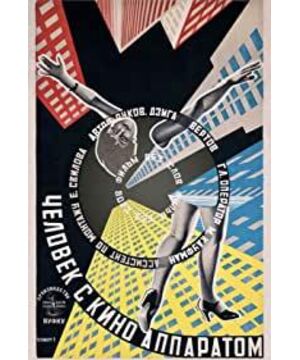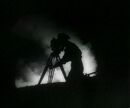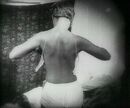While watching this film, I jot down a question in my notes:
"Is this a documentary, or a movie?"
When watching, I often think about the camera position, whether the subject is an actor, and whether the environment is arranged. This problem was easily resolved as I started to learn more about the film and the director himself, but more questions started to linger.
Djiga Vertov was a very confrontational feature film, a Soviet director in favor of "not acting" films. In his own words in "The Film Eye Man: A Revolution (1923)" -
The main and basic purpose of film is to make a perceptual exploration of the world through film.
We understand that in order to gain perceptual knowledge, we must personally participate in social practice and directly contact objective things. And this experimental work is a concentrated presentation of the director's concept and technique imagination. This film Vitov is famous for the invention and development of a variety of film techniques, such as multiple exposures, fast motion, slow motion, stop motion ( freeze frames), jumpers, split shots, etc.
You know, this is a 1929 film, less than a century after the invention of photography in 1840. And in this century, so many masters and practitioners have been able to explore the craftsmanship, equipment, film editing, and creative ideas to such an extent that I am very shocked.
"The Man with the Camcorder" was originally a silent black and white film, and when I watched it, it was a version with a score by later generations. Hearing plays an integral role in the film, but I have to say, it is the visual part of this film that kept me amazed and surprised for 69 minutes.
For example, the opening theater and audience entry, and the audience watching the movie at the end. Only then can we understand that "we are watching this group of audiences while watching this movie with this group of audiences." This nesting doll-like design has also become the blueprint for some scripts.
This made me think of an unrelated work, the "Ice Fruit" that I just watched recently. There is a sentence in it that requires the protagonists to reason about the modus operandi of a suspense film. The male protagonist Hotaro Oreki put forward an idea. In the murder case in the secret room, none of the six people in the camera identified the murderer. Then, the "seventh person" who has been ignored by the audience is the one who has been holding the camera. (And the audience will always ignore it, and the actors are also asked not to look directly at the camera, unless it is an arrangement to break the "fourth wall")
It is enough to see the deep meaning of this design. Although the two works are unrelated, they are both important supplements to the proposition of the paradox of viewing. Interesting, isn't it? The power of the camera is to define the frame, and you are directed to what the director wants you to see, which is an asymmetrical relationship.
In addition, I am also very curious about the stop-motion animation used in the film. How did it come about? It's no exaggeration to say that by going through tutorials my brain tells me, "You will" but my hands say, "No, you won't!"
In terms of technique, I have learned a lot from other teachers' film reviews, so I won't repeat them here. Going back to the content of "The Man with the Camera", I saw a magnificent Soviet version of the Qingming Riverside Map.
In this film with no lines, no plot, and no subtitles, I was fascinated until the last minute because I learned about the cities and people of that era through the camera. From early morning to dusk, the movie starts with the awakening of the city and the awakening of people. From food, clothing, housing and transportation, to weddings, funerals, and marriages, you can experience the day of every ordinary person in this movie, and the life of ordinary people. It's really a dream come true! It feels more like a documentary than a documentary. You can really feel the flow of time, which the director is alluding to with the recurring streets and public transport. In addition to this, there are obvious light and shadow changes in black and white films.
The most impressive part is also in a place similar to the Civil Affairs Bureau of our country. First, a pair of newlyweds who registered for marriage were filmed, and then a pair of couples who were registered for divorce were filmed. Looking at this paragraph together, I can only say that it is simply, absolutely!
Each audience may have different feelings and ideas when they see this editing arrangement, which is also the director's purpose. This idea is also mentioned in his book -
My path leads to a new sense of the world, a new way of interpreting a world you don't know.
Finally, as a novice, living in this era of personalized video, whether it is VLOG or any other video form, from thinking to creating, this part of the content inspires me to think the most——
The day of leaving visual impressions has passed. How to construct the impressions of this day into an effective whole, a visual study? If you photograph everything the eye sees, of course, the result will be a mess. But it would be better if the excess was removed. What we get is a well-organized memorandum of ordinary naked eye impressions.
Thanks to the film and the director, as well as the reviews and analysis of other teachers I consulted, it feels so good to stand on the shoulders of giants and always be able to get a wider view.
View more about Man with a Movie Camera reviews







